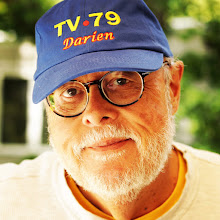"Less News, More Often" - Spring 1999
“Less News, More Often”
by Jim Cameron, Cameron Communications Inc. http://www.mediatrainer.tv/
Check your local newspaper, first under the movie listings. How many different movies are
playing at your local multiplex cinema? There may be 10 screens, but chances are you'll see only 4 or 5 different films, each being offered at multiple starting times.
Now, look at your TV listings. Does your "110 channel" cable system really offer that many different, unique program sources? Or do you find multiple outlets often carrying the same shows. Since the bean counters and efficiency experts took over TV news, amortization of expenses has been the buzzword. Why air a correspondent's report from Kosovo just once on the evening news? Why not repackage it and re-air it several times in multiple
formats?
Did you miss "Dateline" the other night on NBC? Don't worry. Stone Phillips will be back with the very same program on MSNBC as "Weekend Magazine". Are you a real fan of Brian Williams? Catch his evening news at 9pm on MSNBC or replayed immediately at 10pm on CNBC. Want to watch reruns of "60 Minutes" and see Ed Bradley before he
could wear his earring on-air? Just tune in CBS's feeble attempt at a cable channel, "Eye On People".
The bottom line? The technological promise of unlimited choice and varied sources for news and information has not yet been achieved. We're still stuck with the same handful of sources, each masquerading in multiple identities. As Bruce Springsteen put it: "There's 57 channels and nothin' on."
The Incredible Shrinking News Hole
To viewers and readers these days it often seems there is only one story in the news. Be it Monica Lewinsky, Kosovo or the Littleton Massacre, more and more news time is eaten up with fewer and fewer stories.
In many cases, cable stations like MSNBC or CNN use such mega-stories as branding opportunities, hoping their extensive, near-exclusive coverage of such stories will given them a unique identity in viewers' minds. Mention Geraldo Rivera, and what comes to mind? OJ Simpson's murder trial, of course. But such wall-to-wall coverage really leaves me wondering: Is that all that's going on? As important as those stories may be, do they deserve such intense coverage to the exclusion of everything else in the world?
What dastardly deeds perpetrated by bureaucrats and CEO's go unreported? What sour earnings report, environmental impact study or product recall did we miss because Brian Williams wanted to show us footage of Columbine High School for the 99th time?
If this is frustrating to me, imagine how serious journalists feel? Toiling for days or weeks to ferret (Continued on page 2) out a great story they're told there is no air-time to tell
it. Or how about the PR pro's whose big press event, scheduled weeks in advance, suddenly vies for media attention with a school shooting or political sex scandal?
It used to be that PR professionals would avoid the "sweeps week" ratings-hyping theatrics of TV news, preferring to seek coverage on the quieter, more rational un-rated weeks. But now that wisdom seems moot as every day is a ratings race with programmers
vying for viewers however they can.
At the risk of recycling myself, let me share something I wrote a year ago on these pages:
"TV news is like soap. We all use it, but it doesn't leave much of an impression. We are all
awash in infotainment, and the transitory media... TV and radio... are here, then gone in an instant. TV has tremendous "reach", but its impact is often minimal.
In PR the bigger and more important challenge is getting your story in print. That's where the real journalism is practiced today."
‘Less News’ Demands Creative PR Tactics
So, what’s a PR pro to do? How can you best serve your clients' needs given these conditions? Here are a few ideas:
== Don't shotgun your story to all media. Chose a target audience and be laser-beam precise in delivering your message via focused publications, trade and consumer, and websites.
== Don't waste clients' money producing packaged VNR's. They'll only run verbatim in smaller markets. Instead, concentrate on creative b-roll, graphics and newsmaker soundbites. Let the station build their own story using your elements.
== Think local. A satellite media tour or telephone radio-tour can garner far more airtime and recall than 15 seconds on "Good Morning America".
== Work harder at educating your clients that these strategies are worthwhile. Help them understand the wisdom of print over TV, local over national. A guest shot on channel 5 in Boise isn't really "a placement on CBS in Boise". It's just a local station, which is fine.
Don't over-promise or imply that Dan Rather is then going to pick up your story. The local shot may not seem as sexy as the network, but it'll be far more effective... if Boise cares about your message.
== Stop hyping your results. I've seen client reports claiming tens of millions of impressions for a product as a result of VNR's, SMT's and print placements. Don't inflate viewer attention that wasn't there. Instead, track sales. Show that products moved off the shelf in markets where your PR was focused. "Eye balls" just view, but shoppers buy.
== Stay current. Read everything. Surf the web. Know how to use technology for fun and it'll be a tool in a crisis. Travel. Get out of your daily rut. See the world through others' eyes. Eat your vegetables. Take naps. Laugh. And, oh yeah, call Cameron Communications when you need help preparing your media strategies.
© 1999 Cameron Communications Inc.


0 Comments:
Post a Comment
Subscribe to Post Comments [Atom]
<< Home